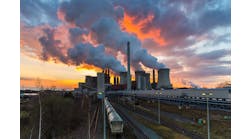“Solids processing” generally brings to mind operations like crystallization, filtration, drying and particle handling such as pneumatic conveying. Many principles involved in these unit operations also can apply to gas cleaning. After all, particulate emissions control is just another separation process.
However, gas cleaning poses a complication not found in other solids processing operations — the involvement of regulatory groups such as the U.S. Environmental Protection Agency and state environmental bodies. These groups not only have set air quality criteria and emission standards but also often dictate the best control technology. That gives companies less room to develop and implement alternatives without launching an expensive research program. Nonetheless, I’ve had success in getting some states to accept my strategy for reducing emissions with alternative technology. The methods I’ll discuss may not apply to your situation but hopefully will encourage you to think differently.
We made a product by partial oxidation. The mined feed material was cleaned but a lot of fine particles remained with the product. Emissions were low and not visible. However, regulations changed and the state wanted a reduction. Conventional tail-gas emissions control amounted to tens of millions of dollars — and that was if enough water was made available, which wasn’t going to happen. Using air/air exchange to cool the exit gas to enable installation of a filter would add much more to the cost.
[pullquote]
The ultimate solution cost only a few million dollars. It involved modifying the feed by removing low-BTU solids and taking advantage of combustion in a cyclone. Using a jet ejector rather than fans eliminated the need to cool the exhaust gas. A short research program convinced the state this would work. Never underestimate the power of preconditioning the feed to a process.
Very few companies construct a process without keeping emissions control in mind. However, they often build to meet current regulations, which can change. The common approach to cope with such a change is to add another control device. I’ve run into several cases where the emissions were controlled by a cyclone followed by a baghouse. The cyclone handled a light load and removed large particles. The feed to the baghouse contained very small particles, requiring frequent bag cleaning. The cleaning allowed fine particles to escape while the dust layer re-establishes on the bags. Bypassing the cyclone only slightly increased the baghouse load but the larger particles established a dust layer faster and even decreased the cleaning cycle. In one case where the particles agglomerated enough, they could be re-injected into the baghouse at the end of a cleaning cycle to act as a preconditioning agent. So, before you buy a bigger baghouse with expensive bags, understand how you might use the particles to solve the problem.
A lot of people don’t like wet scrubbers for emission control because they convert an air problem to a water problem. However, I see this as an advantage, especially when soluble gases are present and you can handle two problems as one. One of the first wet scrubbers I designed was for mist control; mists essentially are particles. Later, when regulations tightened on some of the gases associated with the mist, addition of a pH control system easily allowed for capture of these substances. The solution from the scrubber was crystallized and concentrated for re-use in the process. When installing a control device, it’s wise to consider how changes in regulations or your process can affect the selection of a device.
The Achilles heel of most emissions-control devices is the amount and size of fine particles. Combustion processes create some of the biggest problems because condensation from gas forms many particles. However, growth of these sub-micron nuclei can occur with time, just as it does in a crystallizer. Quenching a process too fast can freeze the particles as very fine ones that are more difficult to capture. In one case, we had a copper calciner that had a very short duct between it and the scrubber. Emissions were high. During redesign of the calciner, we installed a longer duct that improved the scrubber efficiency by allowing the particles to grow. This is another example of an alternative way to control emissions.



